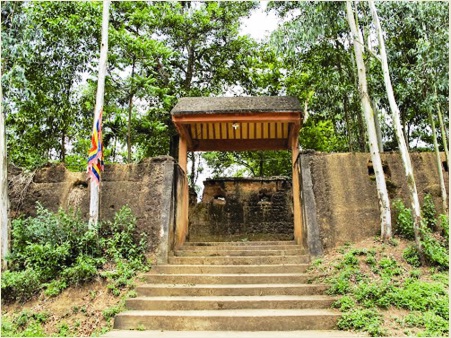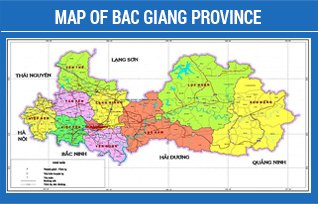Phon Xuong station
Phon Xuong station is located in the clusters of Phon Xuong base now in Cau Go town, Yen The district. The main posts include Phon Xuong main station, auxiliary posts of Am Dong, Trai Co, Ho Lay, To Cu, Ca Can, Ha Trieu Nguyet surrounding in Phon Xuong and Tan Hiep communes, 1894-1895.

Phon Xuong is located in the center of Cau Go town. Here De Tham and the commander of the longest revolt directed the tactical strategic direction of Yen The insurgent army. Phon Xuong is 30 km west of Bac Giang Township; From Bac Giang city, follow the National Highway 1A (old) through the Thuong River Bridge, turn right along provincial road 398, Bac Giang-Cau Go.
Phon Xuong is also called Don Go, Don Cu, located in the southern part of the hill about 20m high, about 800m south of the Go River. This hill is called Phon Xuong hill or Ba Ba hill in Cau Go town. This is a large-scale base, structured differently from the Banu Ban and other posts. The square has a rectangular architectural plan that runs along the north-south direction, which is approximately one North of the two-lane. The outer ring starts from the eastern hillside and runs around the hill to the top of the hill to protect the inside wall of 140m long, 0.80m high and 4m high. The wall of the citadel is at the top of the hill, roughly rectangular. The eastern wall is 71m long and the north face is 85m long. The walls are covered with clay, feet 2m thick, 3m high and 1m wide on the face. Within the walls are three different levels can stand or kneel are shot. There are holes in the wall. The outer wall slopes gently like the roof.
Phon Xuong has 3 gates: The main gate looks east and the two gate are in the south and north. Two additional ports are connected to the surrounding forests. In particular, the north gate connects to the forest of the other half of the hill. Two sub-1.50m wide gate is now intact, the main gate is 15m from the north wall, 2m wide with 4 steps up and down. Inside the main entrance is a guard post located at the north wall of the square at 2m each. Inside the main door there are two layers of protective earth and many holes in the apex. The gates have two doors, outside the wing gate, inside the gate and are made of ironwood. The outhouse is located behind the watchtower, followed by the auxiliary posts, the trenches and then back to the surrounding walls. The distance between the two largest places is 20m, the narrowest is 10m. Within the city is a wide space including the system of houses, guest houses, warehouses ... all are home to the straw walls. Except for the square guest house is built of brick. Turned from the north to the south into the house of Hoang Hoa Tham and Ba Ba pagoda, the house has 5 chambers running towards the East. The second square with four sides of the blank used as a meeting place of Hoang Hoa Tham with generals and guests. The next two rows are located adjacent to the east side of the city, which is the dwelling of the garrison. Next, there are 8 kitchen compartments and stables located close to the south side of the city running east-west, followed by light towers and flagpoles.
Fortunetelling is a special architectural style. It not only fulfills the requirements of a strong fortress but it also offers a flexible combat capability and meets the requirements of a command center, a war center. Over time, the fortification system and the buildings in the city are covered with clay is also susceptible to erosion. Now houses in the city no longer, the wall is no longer kept intact as before. The east side of the wall also retains many old architectural features. On the wall of the hole is clear blue diamonds. In the temple building Ba Ba temple. Every year, on March 16, the yen festival calendar takes place on the complex of this relic.
In the late 1980s, the daughter of Hoang Hoa Tham, Hoang Thi The, was here and when she died, she was buried here, on the tombstone only the simple words: "Mrs. Hoang Thi The, born in 1901, died 9.12.1988".
It is said that Penang was the capital of the uprising, where it began to open up the movement to the local. Here the insurgents fought bravely against the large-scale attack of the French colonialists led by Colonel Vat-tay on January 29, 1909. With such historical and cultural values, Pho Xuong station is one of 23 monuments classified as National Special Monument in Decision No. 548 / QĐ-TTg dated 10/5/2012 Prime Minister .

